OK, so let’s get the electric hook-up sorted. Not advice, not preaching, it’s just how we do it. Remember electricity is dangerous, can’t see it, can’t smell it, but touch it and it can kill. I’m not qualified, so if you’ve any doubts, get an electrician to advise, and certainly get it confirmed at the next service.
We used to carry every adaptor under the sun, but got down to this essential, go anywhere kit. I’ve laid out all the paraphernalia for touring in Europe, as you can see it’s not too much and simple to use. All of this is available at camping shops, flea bay etc, – nothing to worry about here.

Let’s start with the central and most important bit, the hook-up cable. This one’s 20m and stored in a bag. One end, the female end goes into the caravan. The other end goes into the site supply, except it does not always fit. We have only come across two types of socket in all of our years of European touring, so this post is all the kit you need.
We carry two hook-up cables; with a door on the “wrong” side of the caravan for European touring we often need to route a bit further to the site box. Or as has been the case we can tuck ourselves away in that wooded corner, where other campers’ cables won’t reach.
We did initially consider using household extension leads, cable reels, etc, but in the end we use the proper hook up cable, bought form our local caravan supplier. We thought that was the best option, it’s prewired, it’s the right size for site supplies, it does feel “heavy duty” and it’s orange so we can see it.
Only a couple of things to consider when using the cable. Firstly don’t keep it coiled up in use, or it will work like an induction coil, and melt ! Lay it alongside the caravan in a nice straight line, come back in another straight line etc, it’s great therapy for the OCD contingent, and just safe for the rest. Secondly, it’s almost the last thing to get packed away and will invariably be wet, so get a waterproof bag to put it in for travel.

All caravan hook-up cables will fit directly into the input connector on the caravan.

From there, the circuit will be protected by an RCD (safety switch) so everything in the caravan will be protected, i.e. no shocks, or worse. Don’t try and bypass the system, it’s there for a reason!
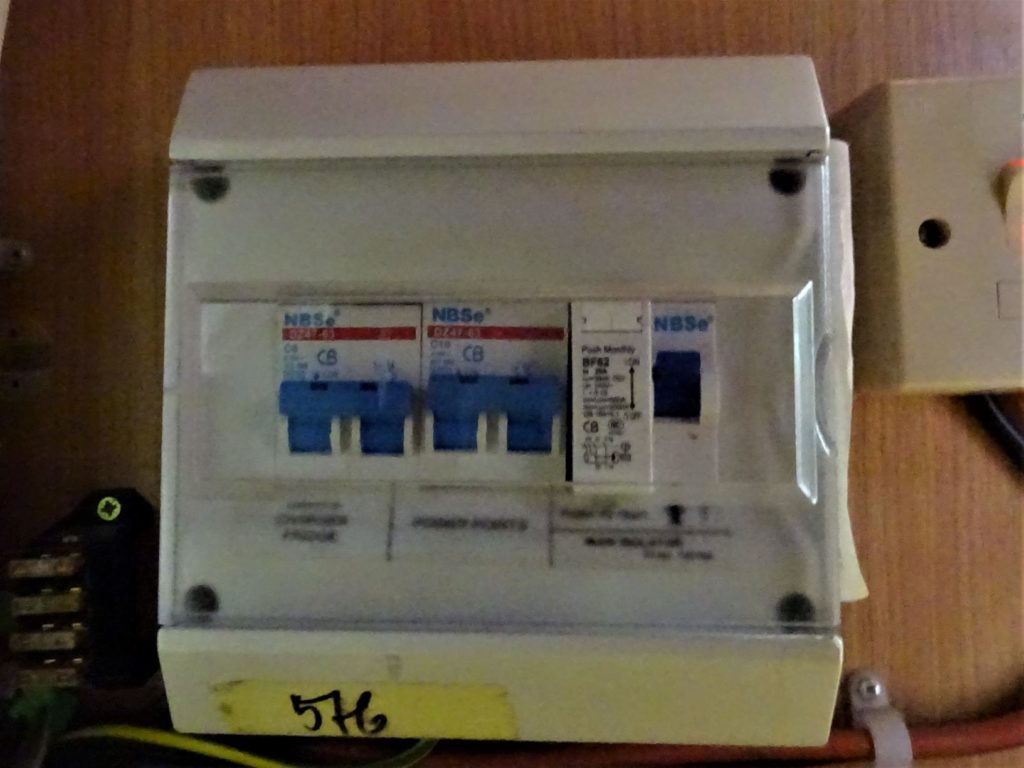
This is the caravan RCD Box, do not fiddle with it.
So let’s get to the end which connects to the site box. The end of the hook-up cable will be a three pin male connector, which if you’re in luck will just fit directly into the site box, which will be a three pin female connector. Even if it is not a correct fit, there is a simple solutions below, so don’t panic!
We’ve only come across two types of connectors in Europe, the blue three-pin on the left, and the white two pin.
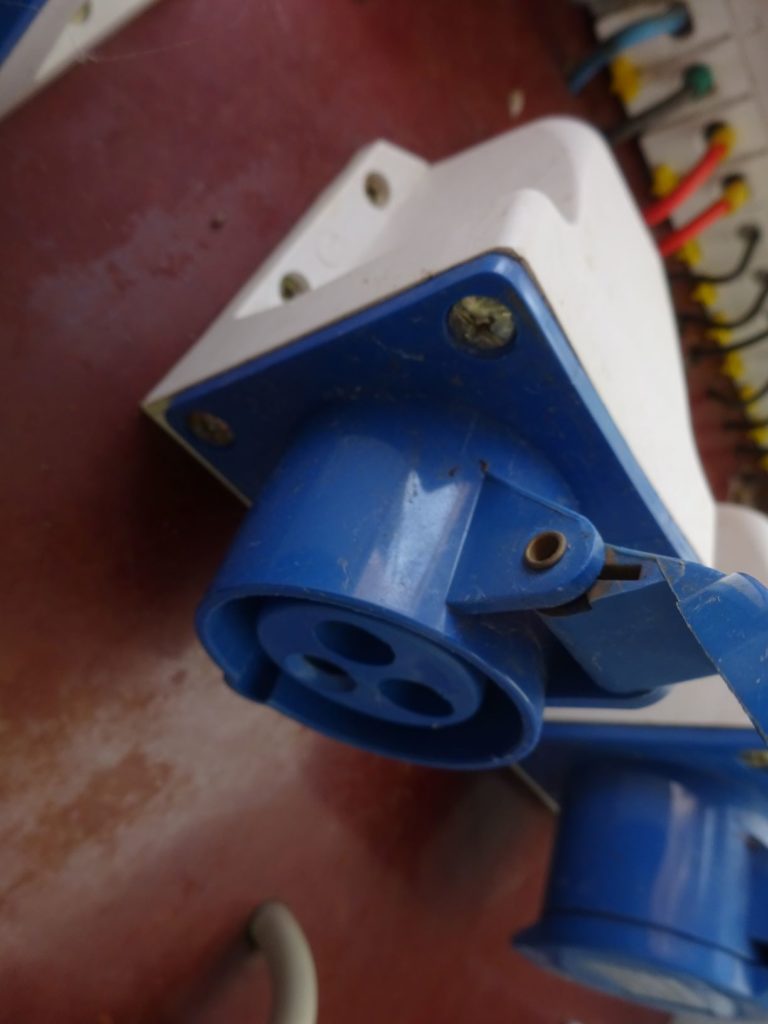
Three Pin Site Supply 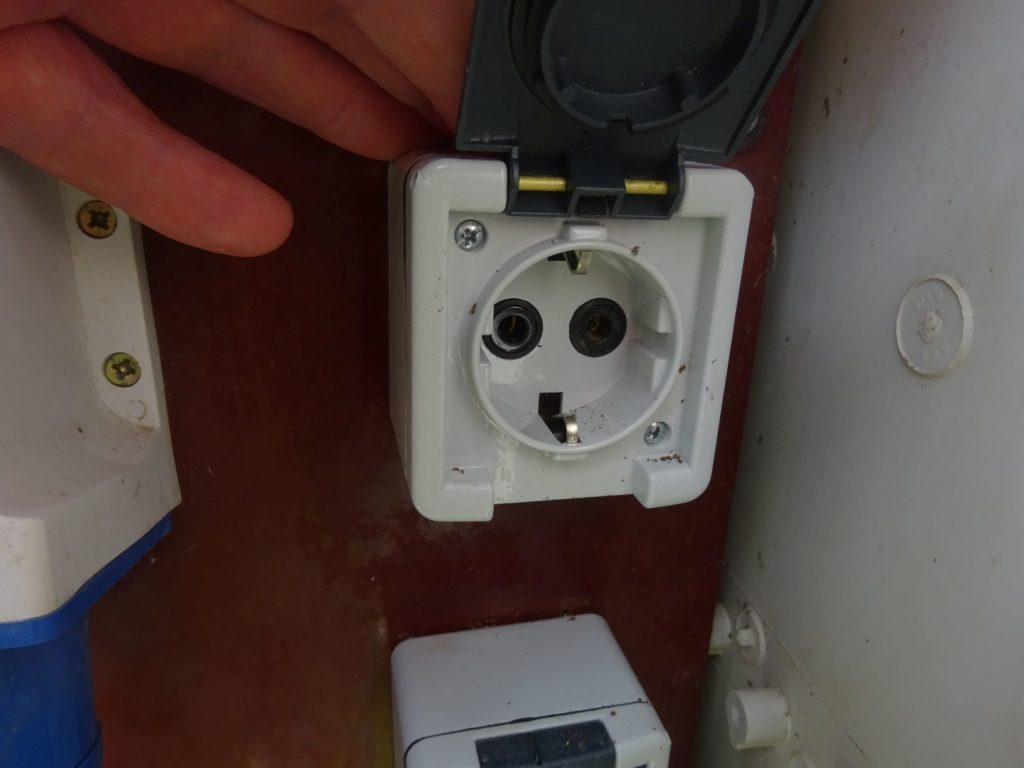
Two Pin SIte Supply
To connect your three pin hook-up cable to the two pin site box, you will need an adaptor. We picked ours up in a French hardware store, but they are readily available online, or at UK camping shops, Simply plug the hook up cable into the three pin end, then plug the two pin end into the site supply. Often the two pin plug can be inserted either way up. Doesn’t matter at this stage.
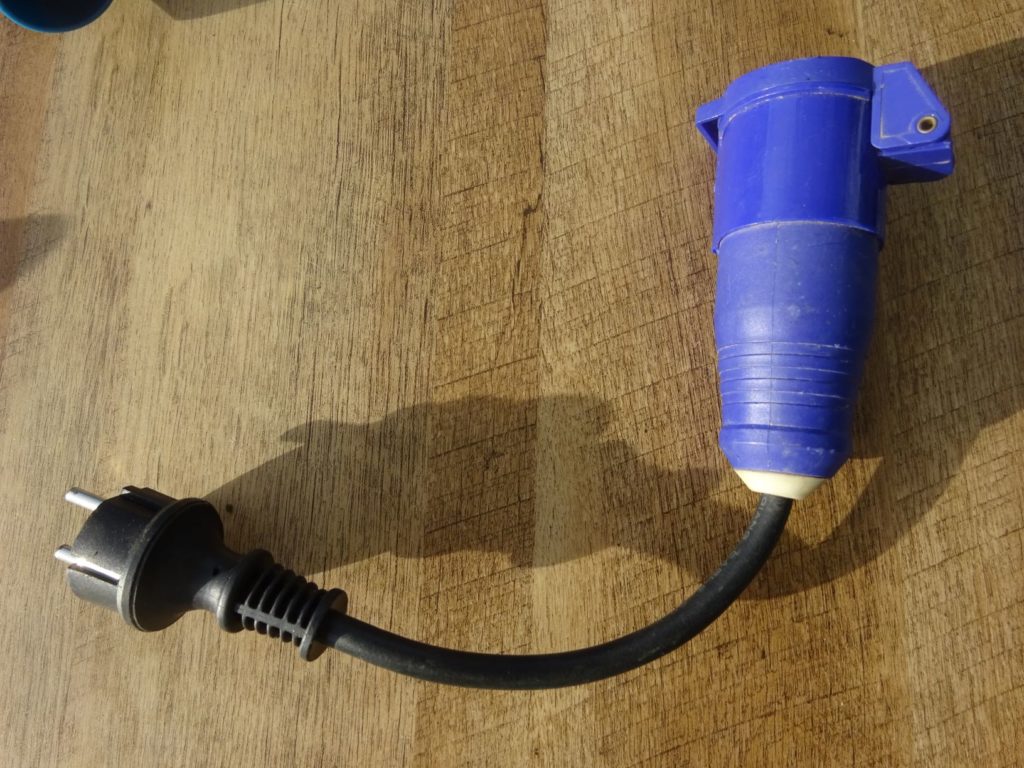
One benefit of having the “continental” adaptor for the hook up cable is that it can plugged into a UK adaptor (standard UK domestic socket) for use when back in the UK. Saves weight and more kit, and thus can be used when home to charge battery, keep fridge on etc. without needing other bits. Do check the polarity, see below, when using the adaptor.
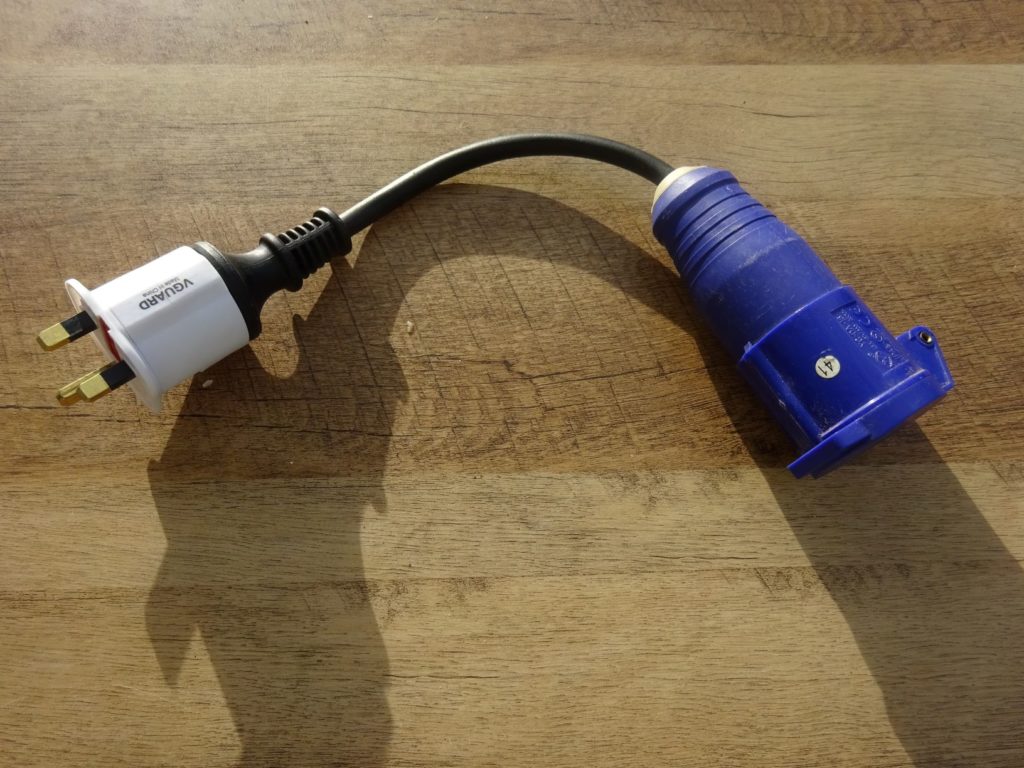
Sorted…. Well not quite. The continental electricity standards and systems are different from the UK ones, and I’m not going into details, or you might think I know what I’m talking about. It makes little difference to the normal operation of the electrics, but let’s get it correct! In the UK we have a Live and a Neutral, in Europe it’s slightly different in that the equivalent live and neutral are often reversed but we can easily correct that.
To check (the polarity) you need a plug in an electrical tester, which is a couple of quid from any hardware shop. On the one we have there are three lights, for good to go, or other combinations of lights, if neutral and live are reversed. Should the tester indicate that neutral and live are reversed then there are a couple of options to convert back to the UK default. If it’s the two-pin continental plug at the site box, simply unplug, and turn the plug over, then retest. We leave our tester plugged in most of the time.

Electrical Tester 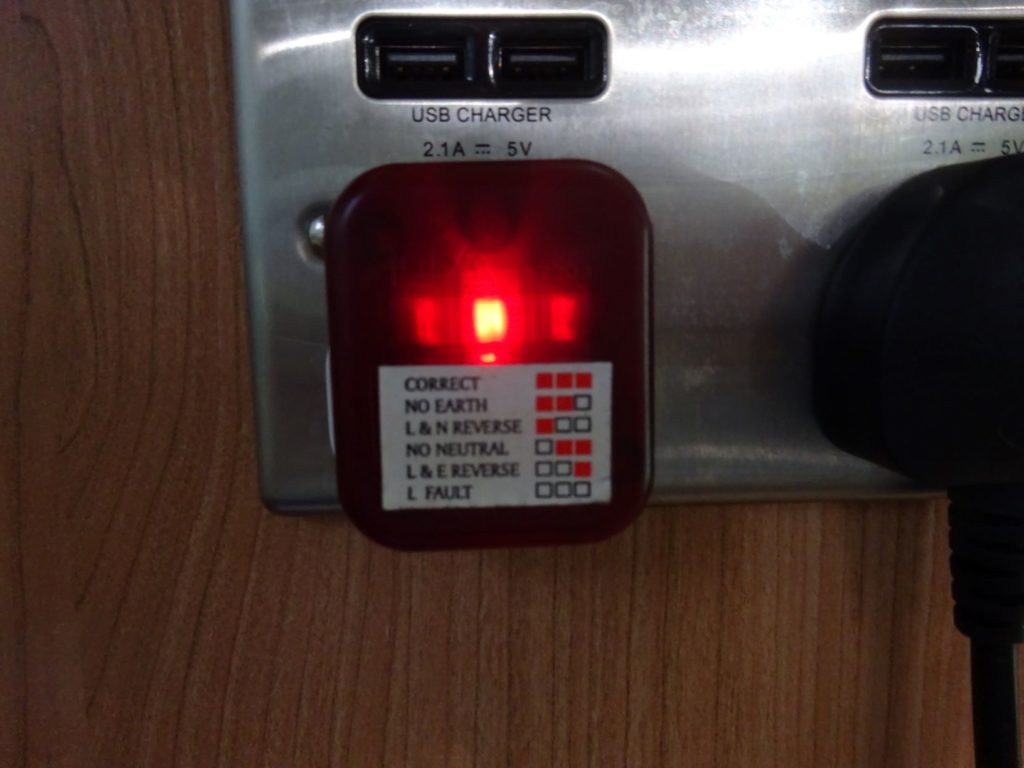
All good to go.
If using the three pin hook up cable, or it’s not possible to turn the two pin upside down, then that’s where the final bit of kit comes in. It’s simply a crossover cable, which corrects the N/L to L/N. I made mine up, but again readily available.

In summary, for continental touring the kit below is essential, and will cover all eventualities without need for anything else to be able to use on-site hook-up boxes.
- Hook-up cable – 20m minimum
- Two pin to three pin continental adaptor lead
- Crossover adaptor
- Electric tester
- 3 pin UK to 2 pin Europe adaptor (optional for use at home etc)
- Bag for Hook-up cable (optional)
- Be aware that on extended tours you may be buying local, for example fans, heaters etc. We take Continental to UK adaptors, or some spare UK plugs as the three pin plugs are not that easy to find in Europe !
A final consideration. The site boxes are generally protected, but we don’t split the power supply before getting electric to the caravan. We get the caravan checked every year, but how often do the site boxes get checked, who knows? We are going to get an external (protected) socket fitted on the side of the caravan, into which we can plug an extension lead, or for now use one of the internal sockets and run an extension lead through the window into the awning or outside.
This site box in Montenegro has both options to choose from. The other site box as on another site , closer to home, , after some heavy rain, and as far as we know is still in use -although we did report it to the site.
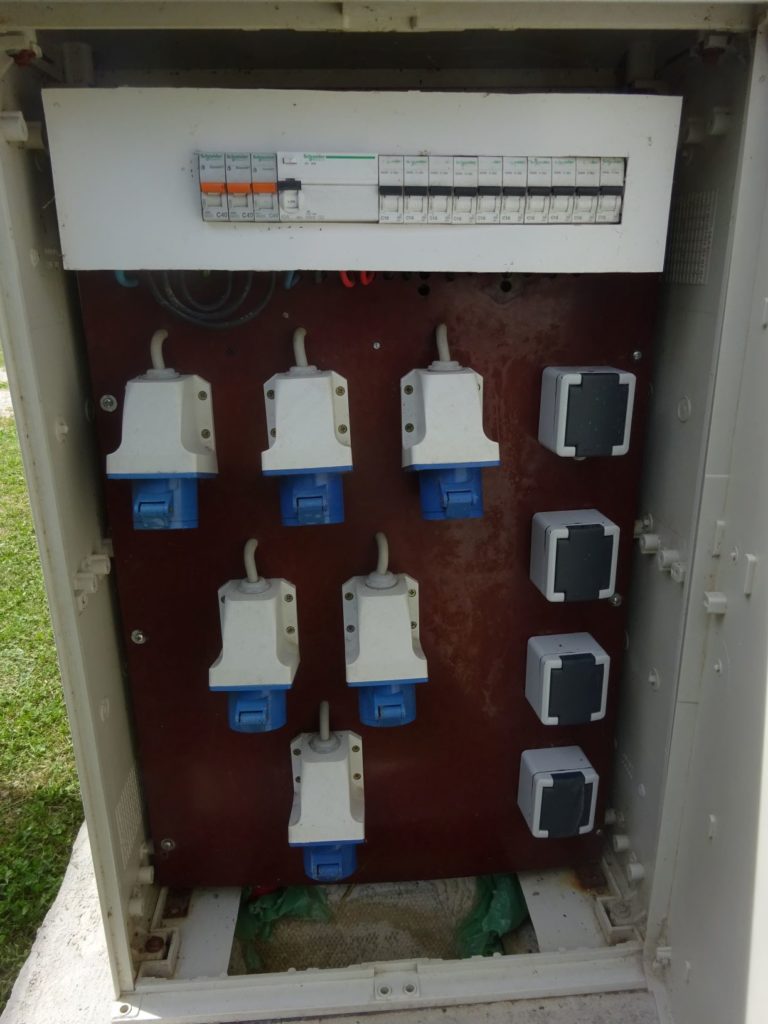
Montenegro 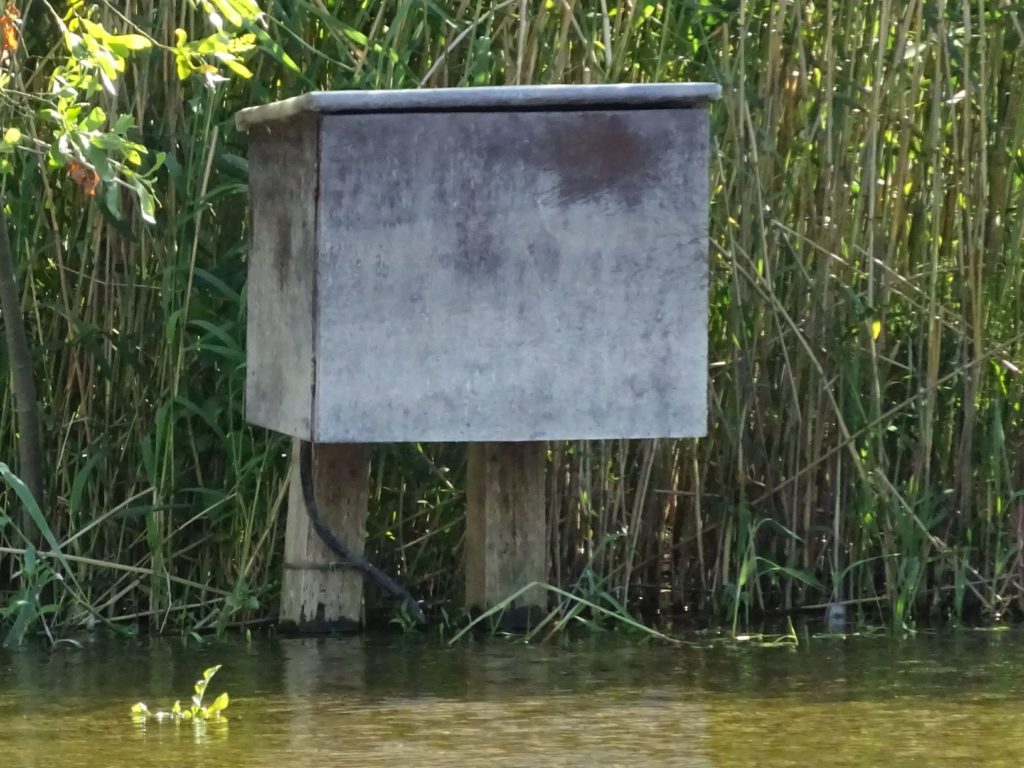
Closer to home